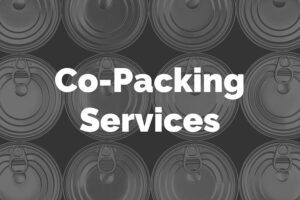Vacancy rates for distribution warehouse space are near all-time lows and that’s forced shippers and 3PLs to rethink traditional strategies to support growth. We recently talked with KANE’s Chief Commercial Officer, Stan Schrader, about the impact of the real estate shortage on current product distribution.
Q: What’s going on out there?

A: Long-time logistics executives are telling us that this is the most challenging supply chain they have experienced in their professional careers. Between historically low vacancy rates for warehouse space, a severe labor shortage for drivers and warehouse associates, and pandemic-related supply chain disruptions, traditional strategies are out the window. That’s especially true for real estate. The idea of getting space when needed – for seasonal spikes or a growth surge – is a thing of the past. Public-warehousing-type deals are rare and almost non-existent.
Q: It sounds like landlords are really in the driver’s seat.
A: They are. Landlords are not as interested in 3-year deals anymore; they want longer-term commitments. In the past, if a shipper or 3PL was interested in taking down half of a large warehouse, the landlord would build a demising wall to accommodate multiple tenants. Not today. Even on the biggest buildings out there, they think they can get a single-use tenant.
Q: So demand exceeds supply. That must be impacting costs.
A: Yes, big time. The competition for warehouse space, particular in major distribution markets is fierce and, in the hottest markets, it’s not unheard of for rates to double for tenants looking to renew a long-term lease.
Q: How are shippers reacting to the new real estate reality?
A: They’re getting accustomed to it. It’s their job to support their companies’ growth and that’s become a real challenge. Customers, new and existing, are asking for our help to find distribution warehouse space.
We had a customer looking for a large, rail-served warehouse near one of our campuses. We found and leased a building that met all the company’s specifications, but it was 2 hours away. The next closest was another 3 hours away. You can find the perfect house for your products, but it may not be in your desired neighborhood at the price you might expect to pay.
Q: What’s driving the demand for space?
A: Much of the available space has been leased by companies to support growing E-commerce fulfillment volume. Prologis reported that E-commerce represented 25% of its recent lease signings. The pandemic has certainly fueled the online selling boom, for sure, but it’s also sent the volume of retail food and grocery products through the roof. Large retailers and big consumer brands have aggressively expanded distribution warehouse space. As a major player in food and beverage, as well as CPG distribution, KANE has been very busy in the last year finding buildings and starting up new operations.
Q: Are 3PLs as active as shippers in taking down new space?
A: That’s what the data shows, yes. 3PLs know space is a scarce commodity and in some cases, they’re attempting to get ahead of the challenge. They don’t want to limit growth opportunities because they don’t have the space.
Q: When it comes to outsourcing to a 3PL, has the building become even more important than the labor?
A: Increasingly, whoever has the building can control who gets the deal.
Q: It sounds like CPG brands need to think and act differently to ensure they can get their products to market in the current environment. How must they change?
A: For one, they need to move faster. If you over-analyze and sit on a decision, you may lose the opportunity. One CPG company was recently negotiating with a landlord on a 3-year renewal, but were slow to pull the trigger. When other potential tenants came forward, the landlord changed the term to 5 years – a “take it or leave it” offer.
You see the same in the home buying market now. Houses are being sold on the same day they hit the market, with offers well above asking price. But here’s the difference between a home purchase and a warehouse lease. With a home purchase, a family can decide to stay where they are until the market becomes more favorable. But for brands that need added warehouse space to support growing volumes, that’s not really an option.
Q: Does the need to be nimble and act quickly apply to 3PLs, as well?
A: Yes. Landlords don’t want or need to go through protracted negotiations. They don’t have to. So 3PLs need to be able to quickly negotiate leases and come to terms with their client. KANE just completed a lease with a major real estate developer. In this case, a much larger global 3PL was already in the building and was interested in a renewal. But the developer believed the negotiation and signing process would go faster, with less red tape, with KANE.
Q: In what other ways do shippers need to think and act differently in the current market?
A: They need to consider longer-term agreements. A 3-year term may not cover the term of the 3PL’s lease with the landlord. In general, greater flexibility in contract negotiating is warranted. Part of the rationale for outsourcing to a 3PL is risk mitigation, so shippers have traditionally tried to push the 3PL to assume more risk. That won’t change completely. But this market really calls for more of a partner-oriented approach.
Q: We’ve been talking about strategic partnerships between shippers and 3PLs for years. Are we at the point where it’s not a choice but a necessity?
A: I think so. A good example is the trucking side of the business. Many companies avoid committing steady freight to a carrier because they want to capitalize on lower spot market rates when capacity is plentiful. But when capacity tightens, as it has now, those same companies struggle to get loads covered, and often end up spending far more than they would have if they had forged close relationships with select carrier partners.
It’s similar in today’s product distribution market. With all the uncertainty, it’s important to have partners you can trust. You can’t go to a tactical logistics partner and ask them to dedicate capital and resources to solve a major strategic challenge – and then talk about risk sharing. On the other hand, if you’ve built a trusted relationship the right 3PL partner, just about anything is possible. Just look at what we’ve been through in the last 18 months. Businesses have continued to thrive through the pandemic, despite enormous and unprecedented obstacles. Strategic 3PL partners have been a big part of that success.
Q: Any closing thoughts?
A: Nothing that is happening in today’s distribution market is business as usual. Yesterday is not a lesson in tomorrow’s challenges. You just don’t know. This magnifies the strategic importance of having a 3PL partner willing and able to tackle tough logistics challenges at a moment’s notice.
Ultimately, you need to decide on the kind of relationship you want and the kind of 3PL you want to work with – one that’s been empowered to think ahead on your behalf, or one that is constantly re-reading the contract to determine if something is “in scope.”
Source: https://www.kanelogistics.com/blog/race-for-distribution-warehouse-space
- active
- agreements
- All
- Biggest
- boom
- brands
- build
- Building
- business
- businesses
- Buying
- Capacity
- capital
- cases
- challenge
- change
- chief
- CNBC
- code
- commercial
- commodity
- Companies
- company
- competition
- consumer
- contract
- Costs
- Current
- Customers
- data
- day
- deal
- Deals
- Demand
- Developer
- driving
- e-commerce
- Environment
- estate
- executives
- family
- Flexibility
- food
- Forward
- General
- Global
- good
- Growing
- Growth
- Home
- House
- houses
- How
- HTTPS
- HubSpot
- idea
- Impact
- IT
- Job
- labor
- large
- logistics
- major
- Market
- Markets
- months
- move
- Near
- offer
- Offers
- Officer
- online
- Operations
- opportunities
- Opportunity
- Option
- Other
- pandemic
- partner
- partners
- partnerships
- Pay
- player
- price
- Product
- Products
- purchase
- Race
- Rates
- real estate
- Reality
- Relationships
- Resources
- retail
- retailers
- Risk
- So
- sold
- SOLVE
- Space
- Spending
- Spot
- stay
- Strategic
- success
- supply
- supply chain
- support
- surge
- talking
- time
- Trust
- us
- volume
- WHO
- Work
- year
- years








